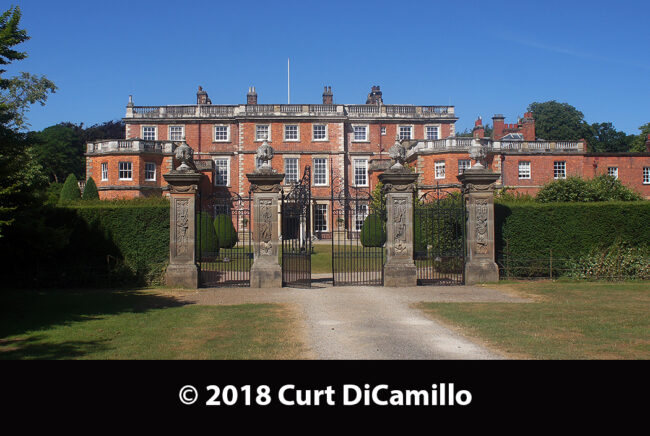
The entrance facade
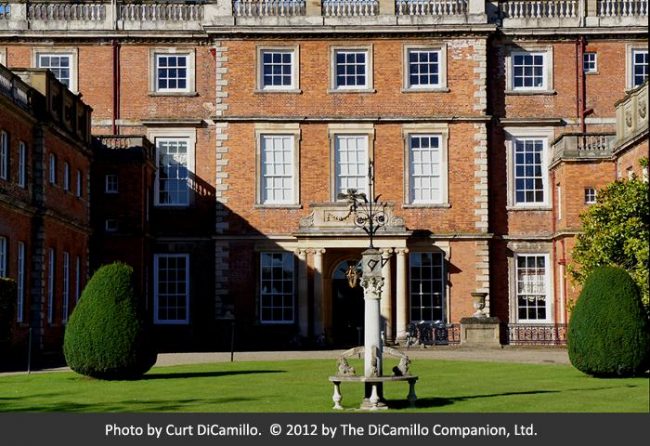
The entrance facade

Detail of the entrance portico

Side facade as seen walking toward the entrance

The house from the garden (Wren wing on left and Adam wing on right)
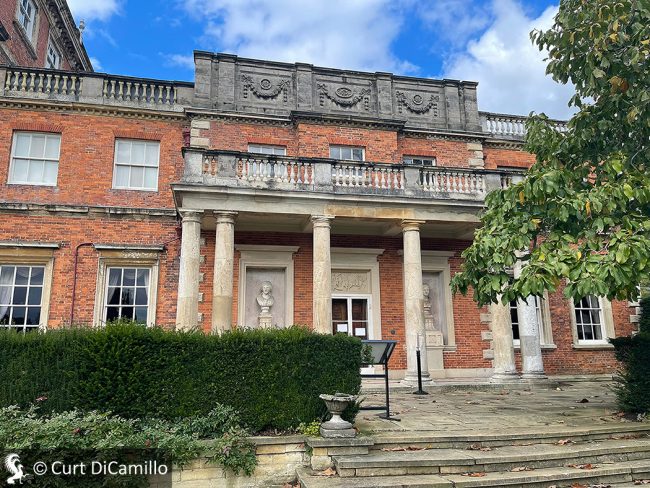
Adam's garden facade
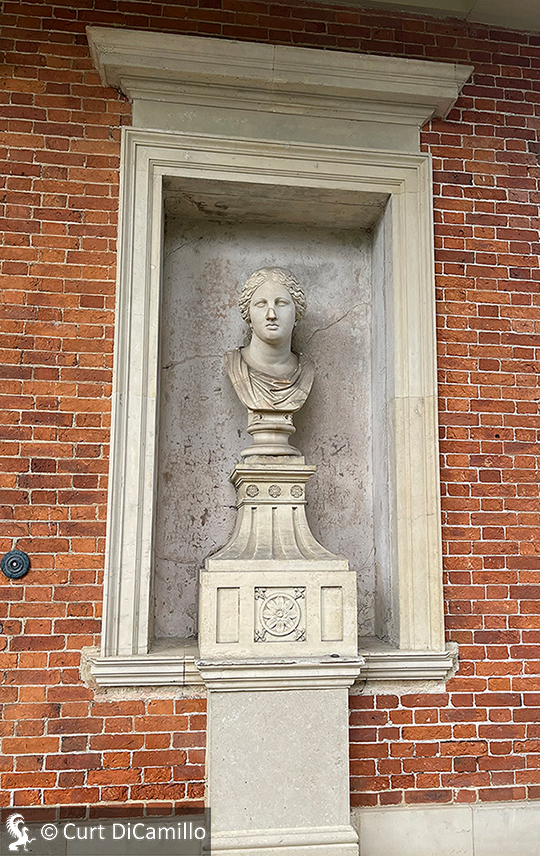
Detail of Adam's garden facade

Detail of Adam's garden facade

Ceiling plasterwork in the entrance hall
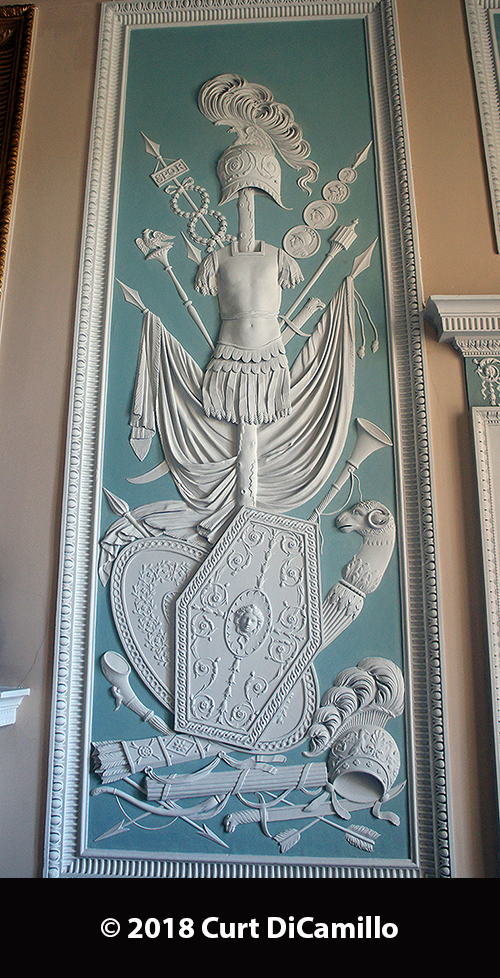
Marital wall plasterwork in the entrance hall

The library

Library ceiling

Library plasterwork

Wall plasterwork in the library
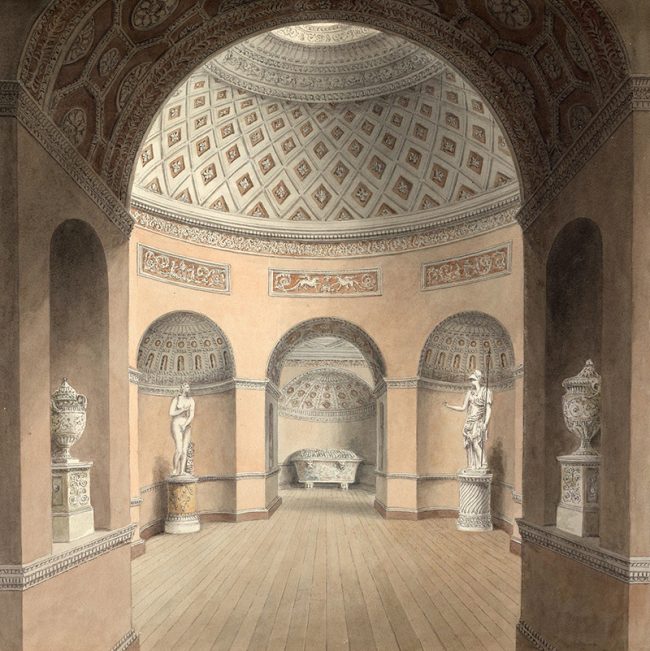
An 1817 watercolor of the Sculpture Gallery by John Buckler and John Chessell Buckler that appeared in "Castellated and Domestic Architecture of England from the 11th Century to the 19th." In the collection of the Yale Center for British Art. This image is in the public domain.

The Sculpture Gallery
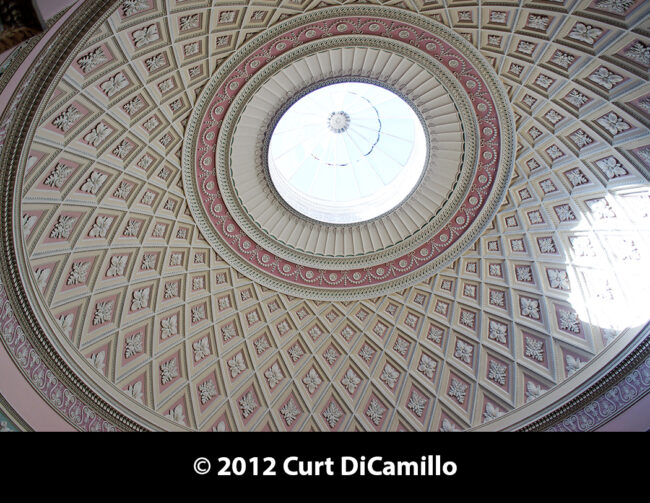
Sculpture Gallery dome
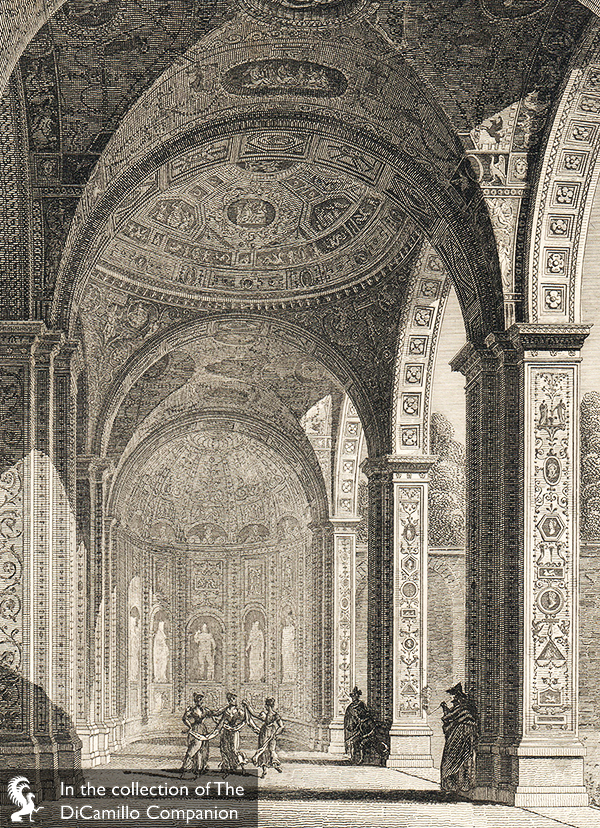
Villa Madama, Rome, from an 1834-37 steel etching. Niches in the Sculpture Gallery were modeled on the Villa Madama.
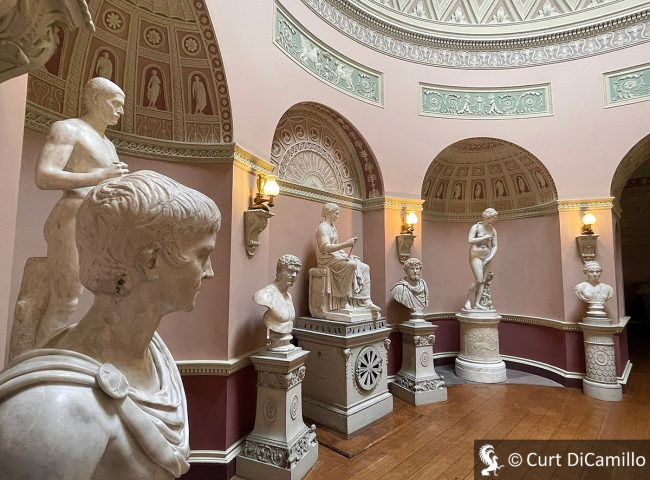
The Sculpture Gallery
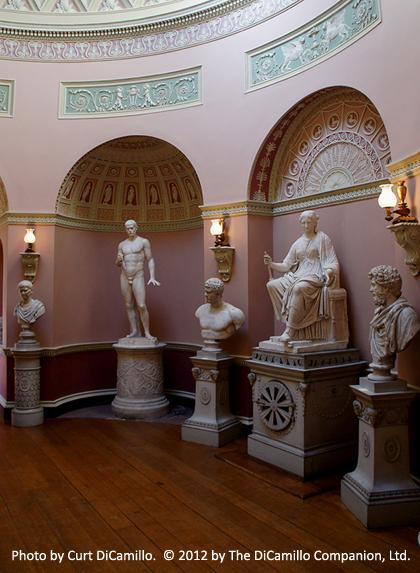
The Sculpture Gallery

The Sculpture Gallery
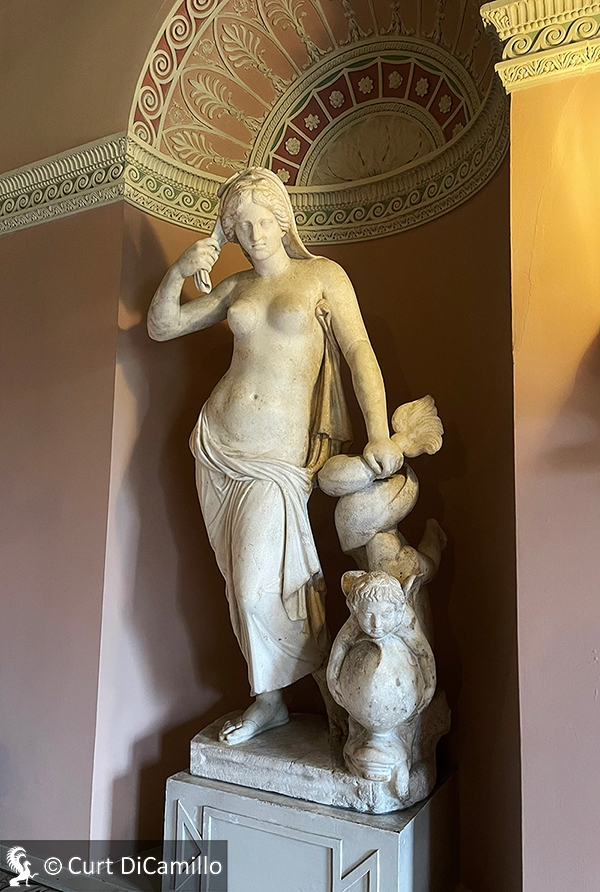
The Sculpture Gallery
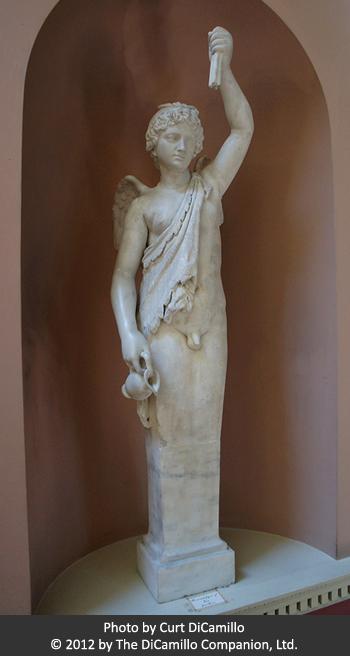
1st-2nd century AD Greco-Roman terminal figure of Eros in the Sculpture Gallery

2002 laser-made Carrara marble copy of the Jenkins Venus in the Sculpture Gallery. The 1st-2nd century AD Roman statue that once occupied this niche is today in the royal collection in Qatar.
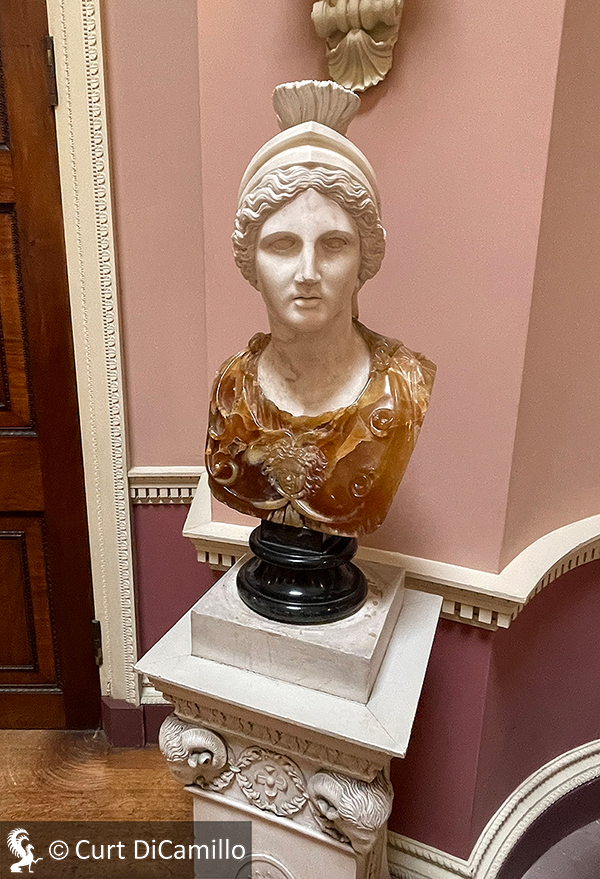
The Sculpture Gallery
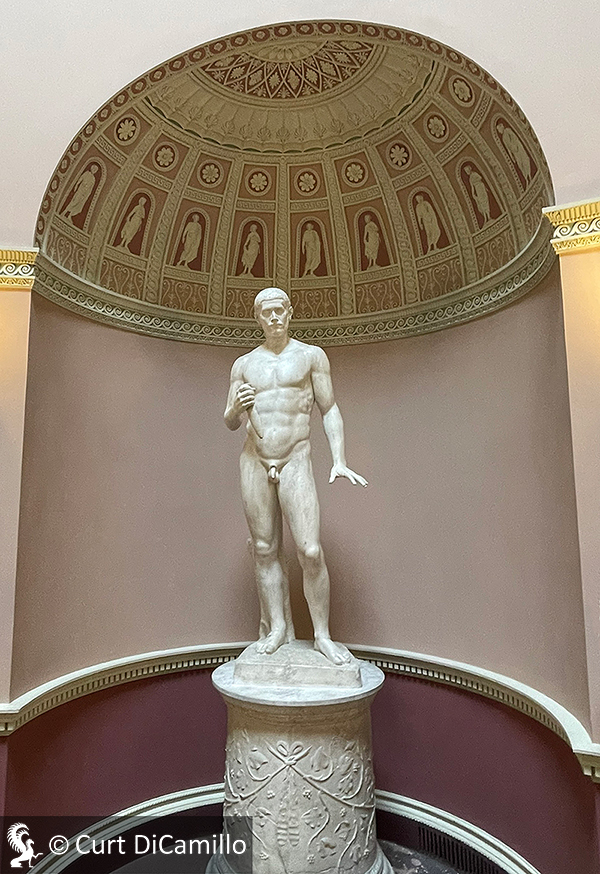
The Sculpture Gallery
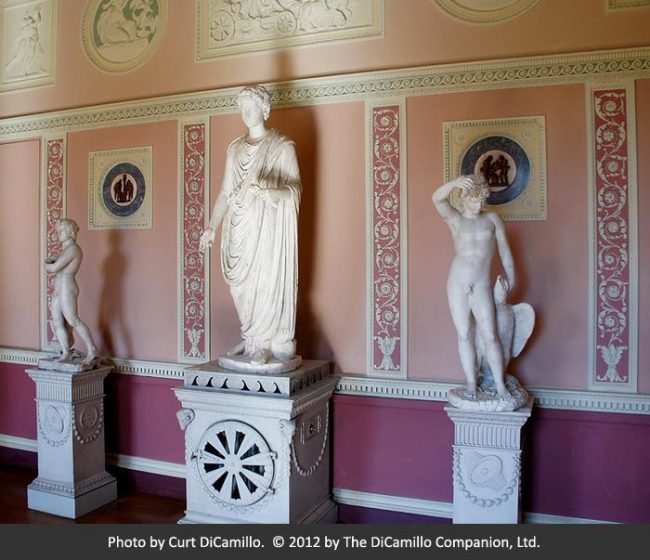
The Sculpture Gallery

The Sculpture Gallery

The Sculpture Gallery

Sculpture Gallery ceiling
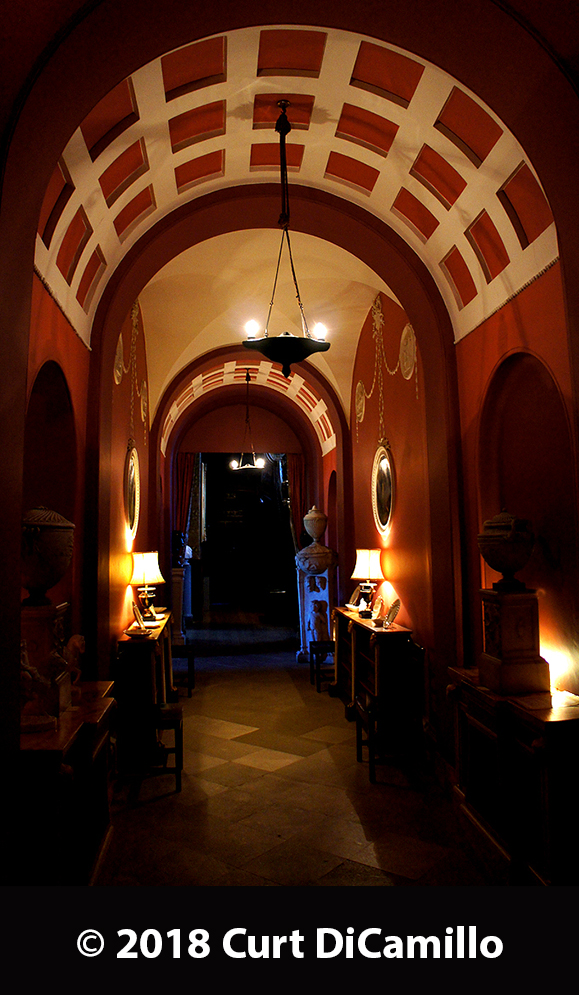
The Red Passage
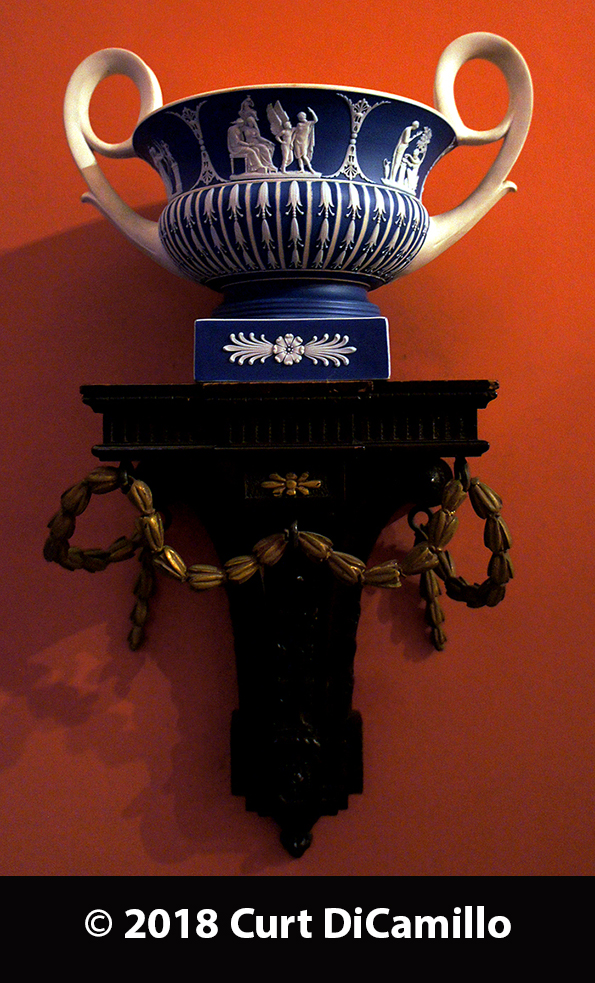
Wedgwood in the Red Passage
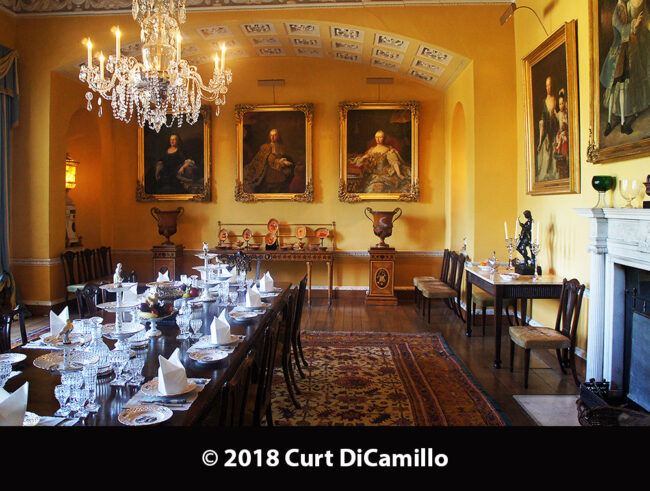
The dining room
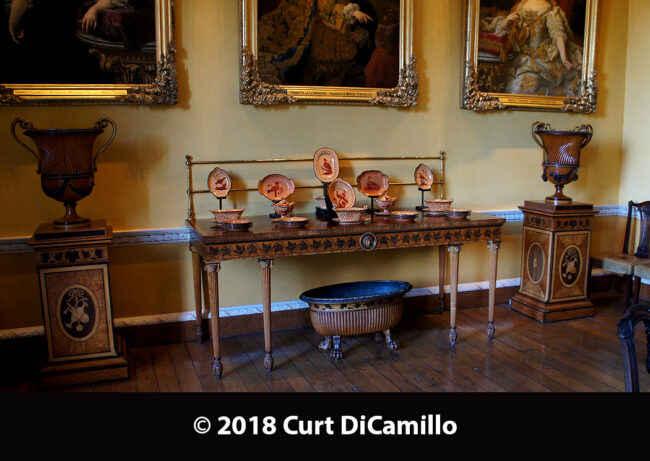
The dining room

Portrait of the 2nd Lord Grantham in the dining room
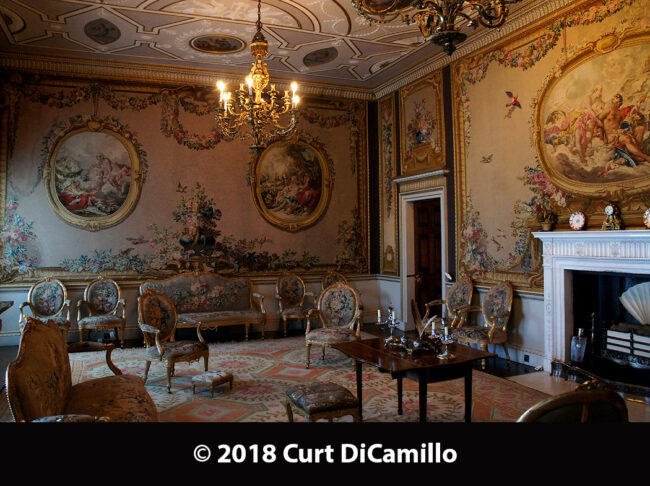
The Tapestry Room

Tapestry Room ceiling
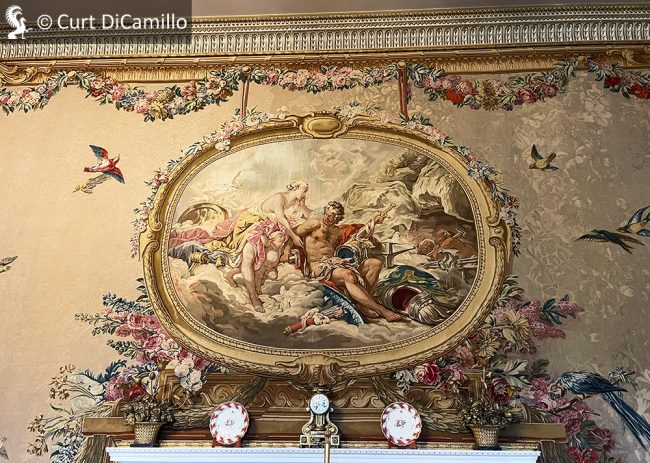
Gobelin tapestry in the Tapestry Room
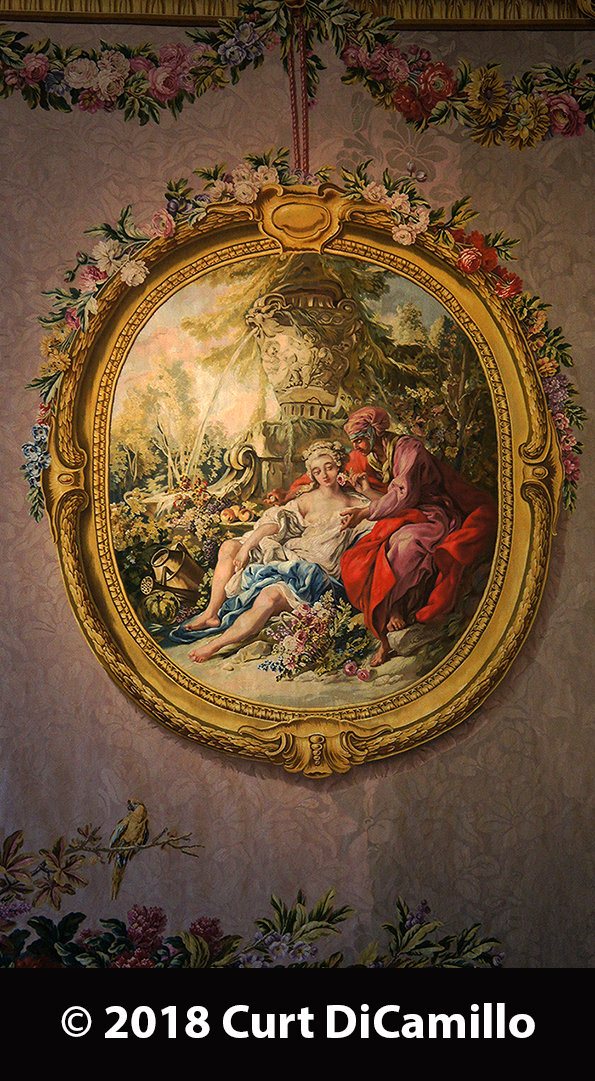
Detail of Gobelin tapestry in the Tapestry Room

Adam-designed, Chippendale-made chair upholstered in Gobelin tapestry material in the Tapestry Room

Adam-designed, Chippendale-made chair in the Tapestry Room

Detail of Gobelin tapestry in the Tapestry Room

Neoclassical pier table underneath Gobelin tapestry in the Tapestry Room. The table was designed by Robert Adam and made by Thomas Chippendale in 1775 for the Yellow Damask Sitting Room at Harewood House.
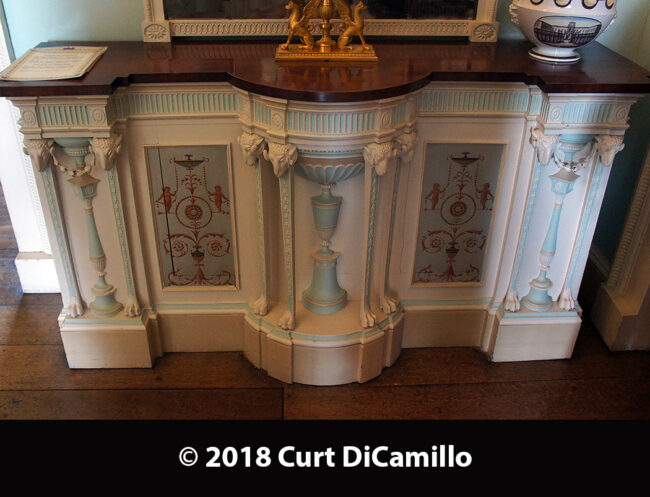
Circa 1783 Robert Adam-designed commode table in the staircase hall

1776 Robert Adam-designed candle vase in the staircase hall

Blue John casket
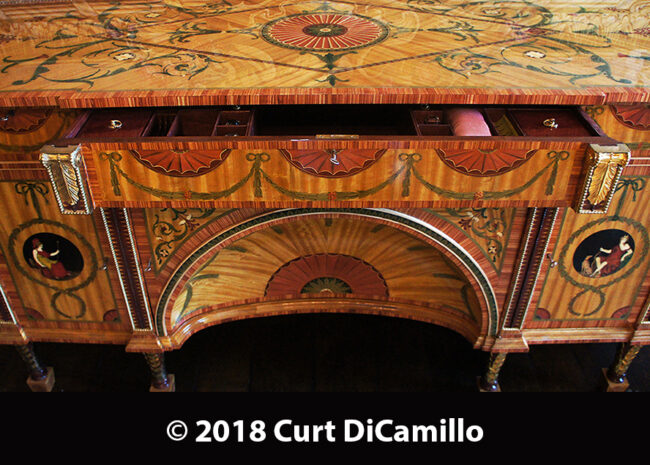
Late 20th century reproduction of the Harewood Chippendale Minerva and Diana commode
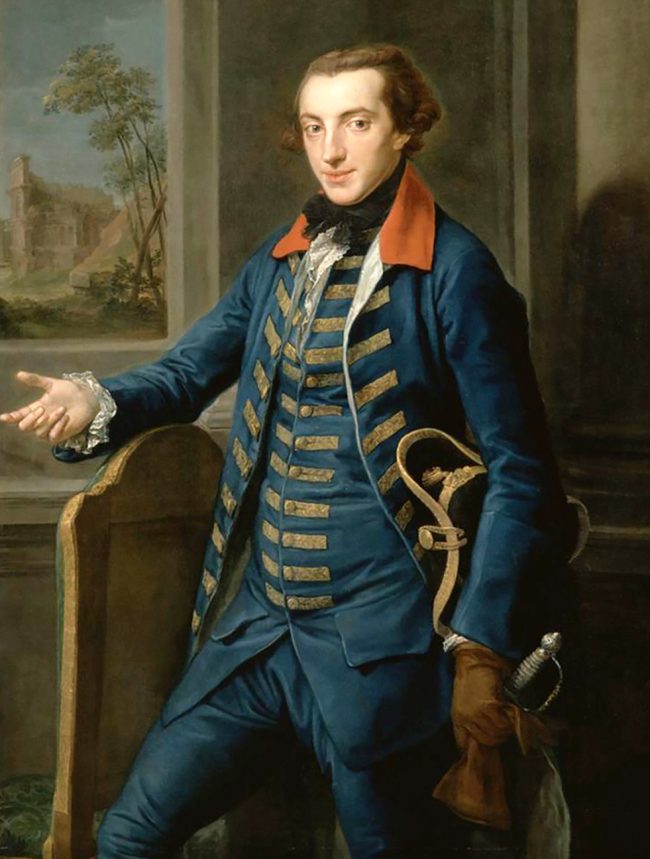
Pompeo Batoni, "William Weddell," 1765-66. In the collection of the Yale Center for British Art. This image is in the public domain.

The stables

The Orangery

Detail of orangery facade

The Church of Christ the Consoler
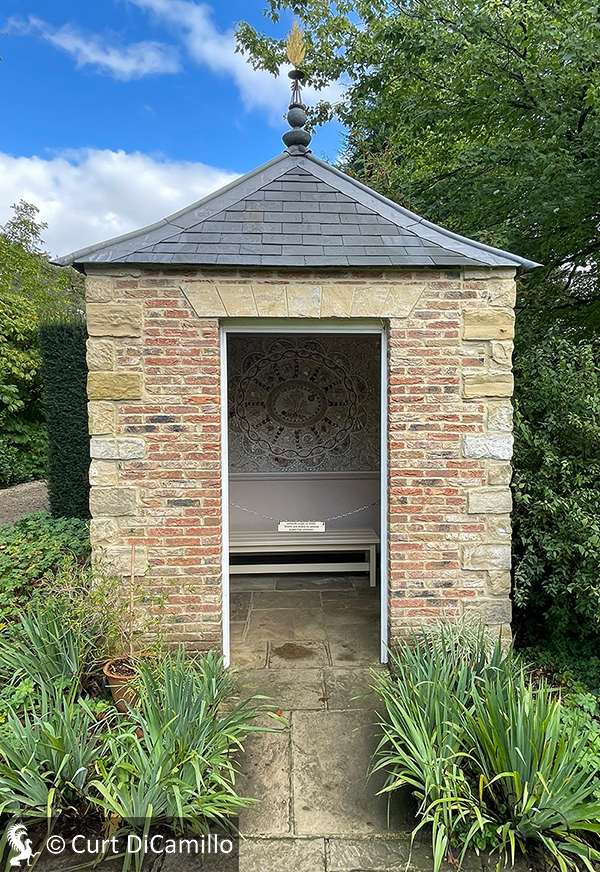
The Shell House

Interior of the Shell House
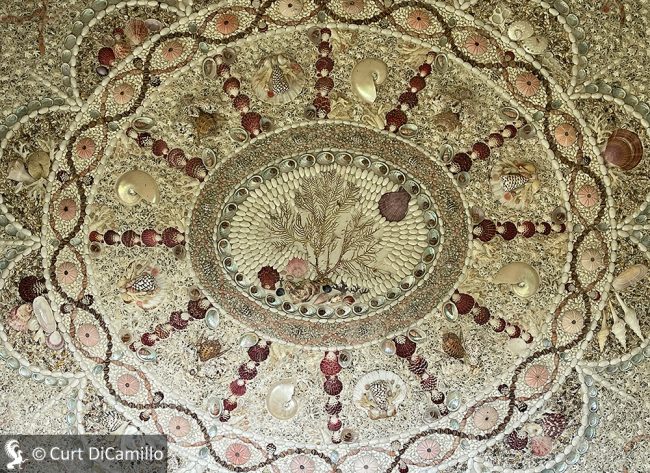
Detail of Shell House interior

The house from the garden
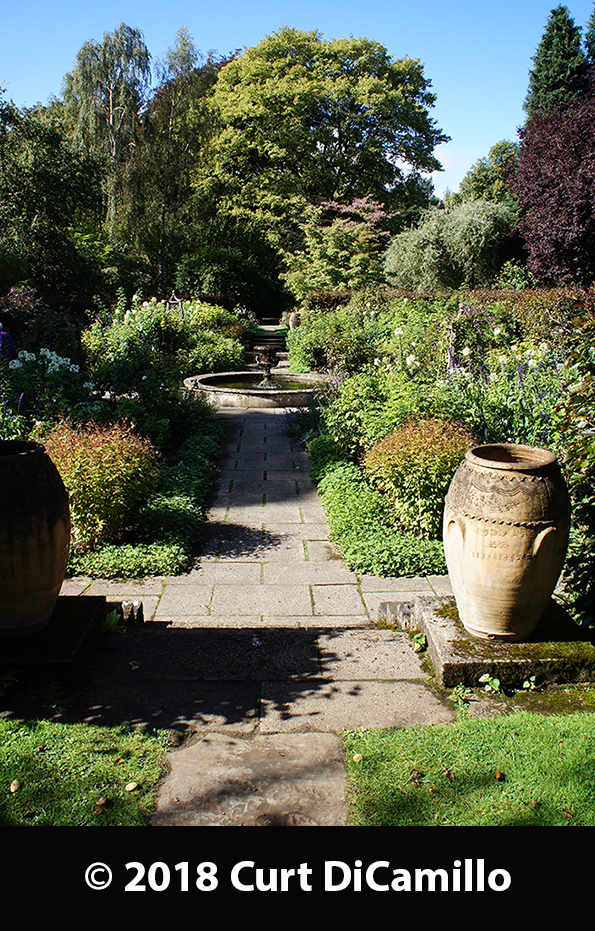
The garden
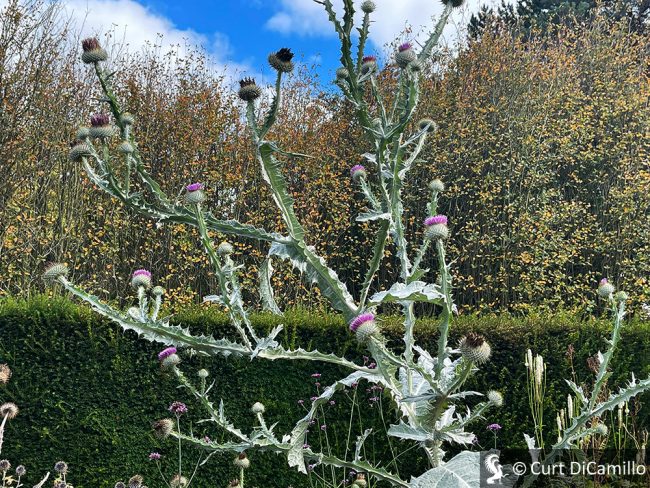
The garden

The garden

The garden
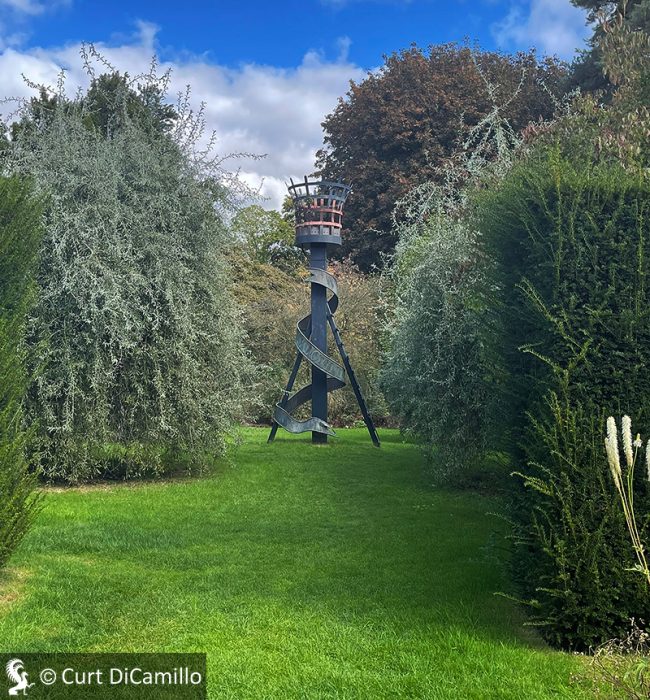
The garden

The garden
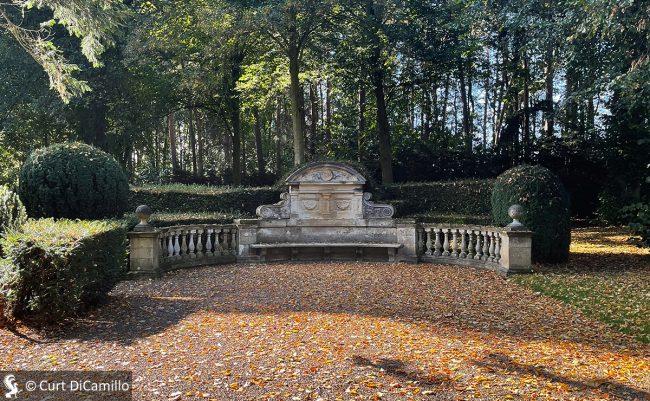
The garden

The garden
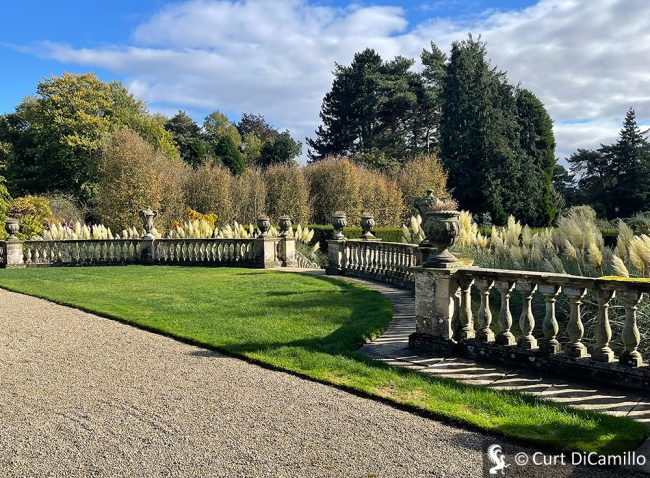
The garden
Earlier Houses: There were probably a number of earlier houses near the site of the current house; the last of these was a manor house demolished in the late 17th century Sir Edward Blackett (when the current house was built).
Built / Designed For: Sir Edward Blackett
House & Family History: In the late 17th century the manor of Newby was sold by the Crossland family to Sir Edward Blackett, who demolished the old house and built a new house on the site, possibly designed by Christopher Wren (the attribution of the design to Wren was made by Daniel Defoe in his 1727 book, "Tour through the Whole Island of Great Britain"). In the mid-18th century the Newby Estate was purchased by the Weddell family, whose most famous member, William Weddell (called "a dilettante of exceptional taste" by Christopher Hussey; see "Images" section), formed the tremendous collection of classical sculpture and other works of art at Newby. Weddell engaged Robert Adam to make improvements, including the addition of two wings forming a forecourt on the east, and the conversion of the east façade to the entry, complete with a new porch. The spectacular, pink domed, top-lit rotunda Sculpture Gallery (partially based on the Villa Madama in Rome, see "Images" section) was also Adam's, as was the Tapestry Room, which contains an exceptional set of Gobelins tapestries made for the room (the Sculpture Gallery at Newby was the inspiration for the Sculpture Rotunda at The National Gallery of Art's ground-breaking 1985-86 exhibition "The Treasure Houses of Britain" in Washington, DC). Adam's dining room was converted to the library circa 1792. Since the popularity of the TV series "Downton Abbey," Newby has been suggested as one of the inspirations for the house and its fictional family; in the 18th century Newby was occupied by the lords Grantham (the 2nd Lord Grantham's portrait currently hangs in the dining room); and, of course, the closest city to Newby is Ripon, which features heavily in the world of Downton. Julian Fellowes, who created the TV series, did, in fact, go to school in Ripon, but he has said that “beautiful Newby” is “connected to Downton Abbey by coincidence, nothing more.” Lord Fellowes said that he chose earl of Grantham as the title for the Crawley family because, when he ran away from school, it was in Grantham, Lincolnshire, that he was apprehended by the police. During World War II Newby was one of four country houses chosen as an emergency residence of state for the royal family in the event of a German invasion. The town of Grantham, New Hampshire, is named after the 1st Lord Grantham (the title became extinct with the death in 1859 of the 3rd Lord Grantham). Queen Elizabeth The Queen Mother was a frequent visitor to Newby.
Collections: The walls of the Tapestry Room at Newby are covered with a set of Gobelins tapestries entitled "The Loves of the Gods" (from designs by François Boucher; see "Images" section) ordered in Paris in 1763 (one of only six sets made for English patrons; the other sets, called the Tentures de Boucher, were made for Croome Court, Worcestershire (today in the collection of the Metropolitan Museum of Art); Weston Park, Shropshire; Osterley Park, London; and Moor Park. Hertfordshire [today in the collection of Aske Hall[). Thomas Chippendale was commissioned to provide, in "the French style," 12 armchairs, two sofas, and a fire screen covered in matching tapestry for the room, the only known pieces of Chippendale furniture that remain today with their original upholstery. Newby contains an exceptional collection of classical sculpture which is housed in the magnificent Sculpture Gallery created to receive it by Robert Adam. The star of the Sculpture Gallery was the 1st-2nd century AD Roman statue known as the Jenkins Venus (see "Images" section). The statue, then in the Barberini collection and known as the Barberini Venus, was purchased in 1763 by Gavin Hamilton, a Scottish connoisseur in Rome; he sold it to Thomas Jenkins, the English antiquities dealer and banker to the English community in Rome. It was from Jenkins (where the statue picked up its name) that William Weddell, in the midst of his Grand Tour, purchased the statue in the spring of 1765 for Newby Hall. The undisclosed sum for which it changed hands this third time was reputedly the most ever paid for an antiquity in the 18th century. In 2002 the Jenkins Venus was sold in London by Christie's to fund repairs to the stableblock at Newby. The statue broke the world auction record for an antiquity, selling for £7,926,650. The Venus is today in the collection of Sheikh Saud-al-Thani, cousin of the emir of Qatar. A laser-made Carrara marble copy stands in the place of the original in the Sculpture Gallery at Newby. In June 2007 a Chippendale table worth an estimated £500,000 was stolen from Newby during a burglary; it was returned following a 2011 police raid and is now on view in rooms seen by the public. In 2021 the London dealer Ronald Phillips listed for sale for £100,000 a Neoclassical pedestal that was probably made as part of the Etruscan dining room suite for Newby. Made circa 1785, the polychrome painted plate warmer pedestal was almost certainly designed by Robert Adam and made by Thomas Chippendale. Spanning the 16th to the 19th century, Newby Hall has an important collection of over 100 chamber pots. Also in the collection are full-scale replicas of the British crown jewels.
Comments: Pevsner said "Robert Adam's interiors at Newby are amongst the finest of their date anywhere in Europe." Christopher Hussey, writing of the Sculpture Gallery, said "It may be observed that Adam nowhere applied the neoclassical conception of spacemodelling into primary shapes with more moving success. The contrast between the sculpture galleries at Newby and Holkham succinctly illustrates the meaning of neo-classical."
Garden & Outbuildings: With the River Ure running through them, the gardens, which won the Christie's/HHA Garden of the Year Award in 1987, span 25 acres and contain famous double herbaceous borders (one of Europe's largest) and the National Collection of Dogwoods (there are 90 varieties of dogwoods at Newby). The Strawberry Pippin (Malus domestica) is a variety of apple tree unique to Newby. The Grade I-listed stableblock has been converted into offices and is today home to 15 local businesses. Jaspar Latham's equestrian statue of Charles II was moved from the Stock Market, London (the site of Mansion House), to the island on the Newby Estate in 1779. On the grounds is the gate from London's infamous Newgate Prison. In the early 21st century a hydroelectric plant was installed on the River Ure to generate electricity for the house; the new plant occupies the site of a similar facility that was built in 1906 to provide power for the entire estate. The Newby Estate today stands at 7,000 acres.
Chapel & Church: The Grade I-listed Church of Christ the Consoler (see "Images" section) was built by the 1st Marquess of Ripon in memory of his brother-in-law, Frederick Grantham Vyner, who was taken prisoner and murdered in 1870 by bandits near Athens while on his Grand Tour. The church was built between 1871 and 1878 to the designs of William Burges and, since 1991 has been vested in the Churches Conservation Trust.
Architect: William Burges
Date: 1870-71Architect: John Carr
Date: Circa 1758-60Architect: Thomas Philip de Grey (Grey)
Date: 1808Architect: Christopher Wren
Date: Circa 1685-90Architect: Robert Adam
Date: 1767-74Architect: William Belwood
Date: Circa 1777Country Life: xix, 90; xxxv, 878; Lxxxi, 658, 688, 714; cxxvii, 1428; corr. Cxxxv, 123; cLxv, 1802, 1918, 2006, corr. 2016; corr. cLxvi, 173; cLxviii, 2406; gardens, xix, 90; Lxxx, 344; Lxxxi, 658; cx xiii, 494, cxxv, 510; cxxviii, 184; cLxxvi, 598; 17/93.70; 29/97.54; redecoration letters, 31/97.75; gardens, 39/98.108;
Title: John Carr of York: Collected Essays
Author: Hall, Ivan; Powell, Kenneth (Editor)
Year Published: 2023
Reference: pgs. 148, 158, 200
Publisher: Winchester: Carriana Publishing
ISBN: 9781399959155
Book Type: Hardback
Title: Newby Hall Guidebook - 2004
Author: NA
Year Published: 2004
Reference: pg. 5
Publisher: Derby: Heritage House Group
ISBN: NA
Book Type: Softback
Title: Treasure Houses of Britain, The - SOFTBACK
Author: Jackson-Stops, Gervase (Editor)
Year Published: 1985
Reference: pg. 333
Publisher: Washington, DC: National Gallery of Art (New Haven: Yale University Press)
ISBN: 0300035530
Book Type: Softback
Title: Telegraph, The (newspaper)
Author: NA
Year Published: NA
Reference: Apr 15, 2013 article by Joe Shute in the Lifestyle section
Publisher: London: Telegraph Media Group Ltd.
ISBN: NA
Book Type: Newspaper
Title: Newby Hall Guidebook - 2000
Author: NA
Year Published: 2000
Reference: pg. 29
Publisher: Norfolk: Jarrold Publishing
ISBN: NA
Book Type: Light Softback
Title: Georgian Group Annual Report
Author: NA
Year Published: NA
Reference: 2002, pg. 7
Publisher: London: The Georgian Group
ISBN: NA
Book Type: Light Softback
Title: English Country Houses: Mid Georgian, 1760-1800
Author: Hussey, Christopher
Year Published: 1956
Publisher: London: Country Life Limited
ISBN: NA
Book Type: Hardback
Title: Country Life Cumulative Index: Volumes I to CXCIII to December 1999
Author: NA
Year Published: 2000
Publisher: London: IPC Magazines Limited
ISBN: NA
Book Type: Light Softback
Title: Biographical Dictionary of British Architects, 1600-1840, A - HARDBACK
Author: Colvin, Howard
Year Published: 2008
Reference: pgs. 52, 119, 225, 451, 1160
Publisher: New Haven: Yale University Press
ISBN: 9780300125085
Book Type: Hardback
Title: No Voice From the Hall: Early Memories of a Country House Snooper
Author: Harris, John
Year Published: 1998
Publisher: London: John Murray
ISBN: 0719555671
Book Type: Hardback
Title: Best Buildings of England, The
Author: Pevsner, Nikolaus
Year Published: 1986
Publisher: London: Viking
ISBN: 0670812838
Book Type: Hardback
House Listed: Grade I
Park Listed: Grade II*
Current Seat / Home of: Richard Compton; Compton family, matrilineal descendants of William Weddell, here since 1748.
Past Seat / Home of: SEATED AT EARLIER HOUSES: Nubie family, 13th century. Sir John Crosland, until 1670. SEATED AT CURRENT HOUSE: Sir Edward Blackett, 2nd Bt., 1695-1718; Sir Edward Blackett, 3rd Bt., 1718-40; Sir Edward Blackett, 4th Bt., until 1748. William Weddell, 1748-92. Thomas Philip de Grey (Robinson), 2nd Earl de Grey, 3rd Baron Grantham, and 6th Baron Lucas, 1792-1859. Henry Frederick Clare Vyner, until 1883; Robert Charles de Grey Vyner, 1883-1915. Major Edward Robert Francis Compton, 1921-60; Robert Edward John (Robin) Compton, 1960-97.
Current Ownership Type: Individual / Family Trust
Primary Current Ownership Use: Private Home
House Open to Public: Yes
Phone: 01423-322-583
Fax: 01423-324-452
Email: [email protected]
Website: https://www.newbyhall.com
Awards: Christie's/HHA Garden of the Year Award 1986. Hudson's Heritage Best Family Day Out Award 2016.
Historic Houses Member: Yes